

Industry News
Overhead cranes and gantry cranes are highly efficient lifting equipment for material handling. Although they appear similar, key differences exist that can affect their suitability for certain applications. In this article, we'll explore the differences between bridge cranes and gantry cranes, their respective advantages and disadvantages, and how to choose the best option for your needs.
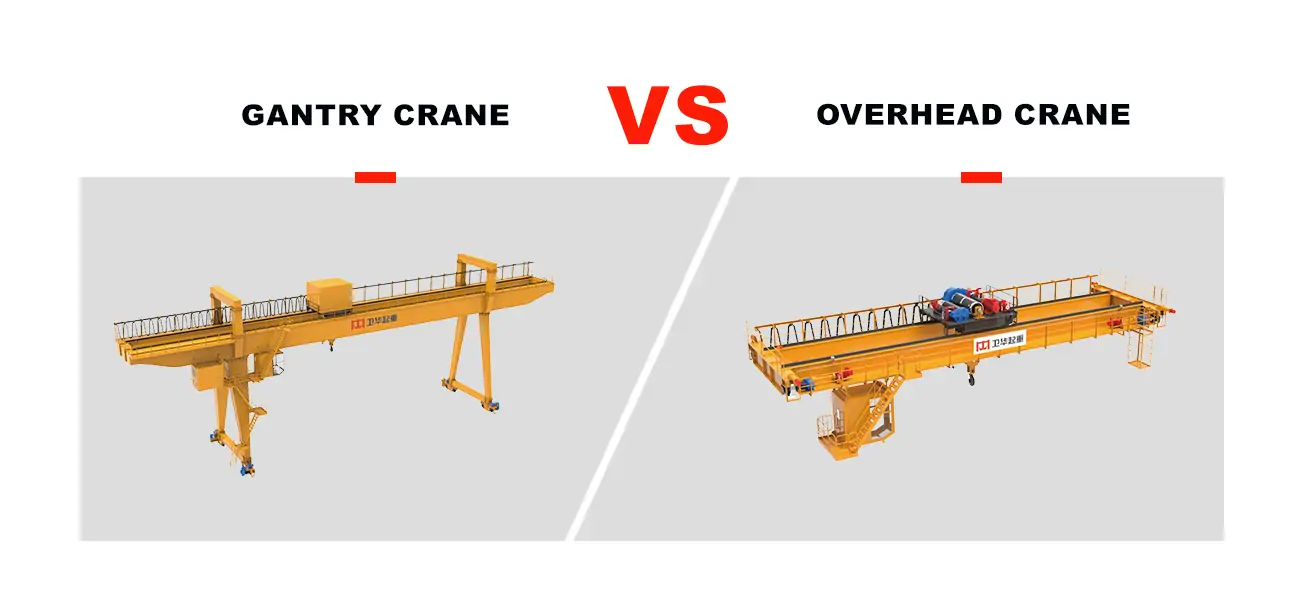
An overhead crane, also known as a bridge crane, is a type of crane that consists of parallel tracks with a bridge spanning between them. A hoist runs along the bridge to lift and move the load, thus achieving three-dimensional movement.
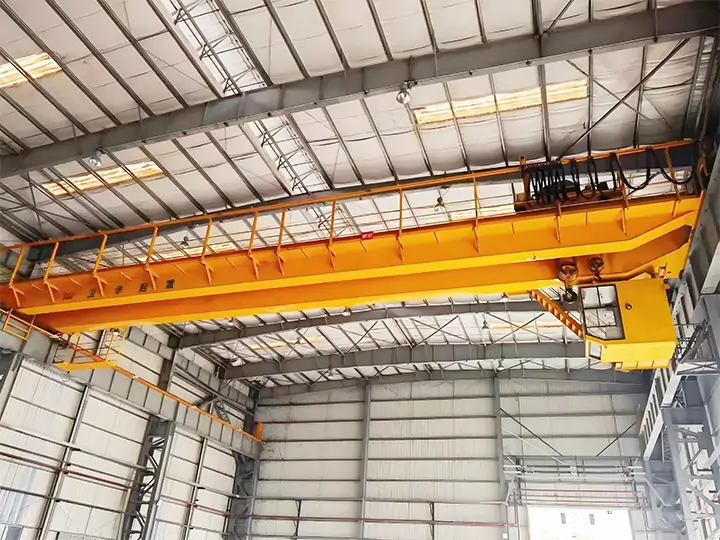
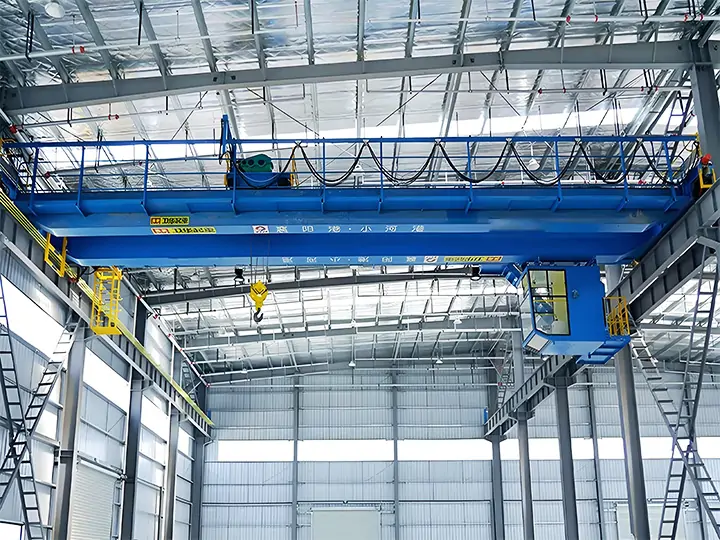
High Load Capacity: Bridge cranes can carry heavy loads, making them ideal for a variety of industrial applications.
Efficient Space Utilization: Because they are mounted on existing structures, overhead cranes do not require additional floor space.
Versatility: Bridge cranes can be customized to meet specific requirements, such as lifting height, load capacity, and span.
1. High Installation Cost: Installing an overhead crane can be costly due to the required structural modifications.
2. Limited Mobility: Overhead cranes are fixed in place, limiting their flexibility to adapt to changing needs.
A gantry crane is a type of crane that consists of a horizontal beam (the gantry) supported by two or more legs that run on fixed rails or wheels. The crane moves along the gantry to lift and transport loads.
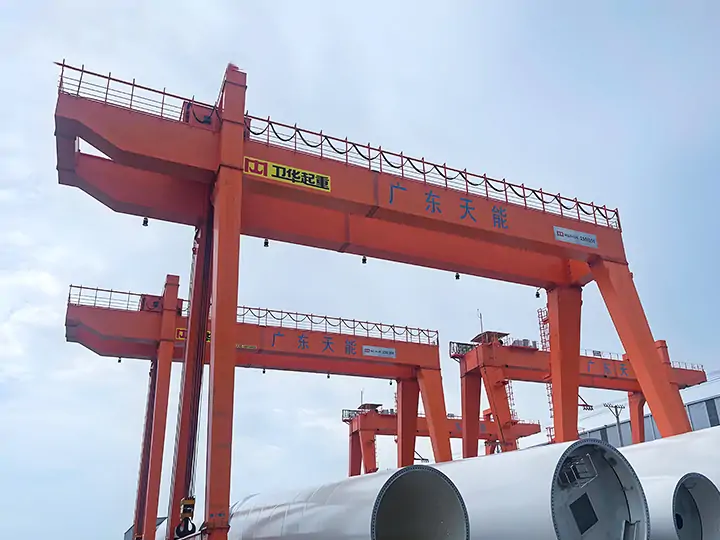
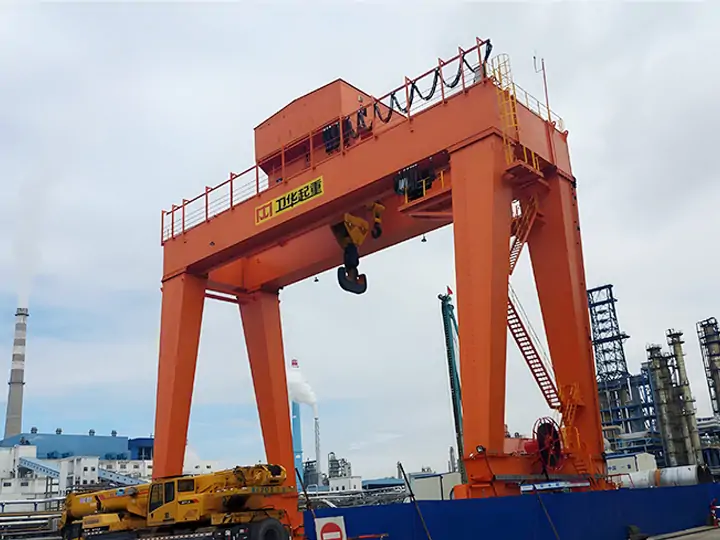
1. Mobility: Gantry cranes offer greater mobility than overhead cranes because they can be relocated to different locations within a facility or even transported to different locations.
2. Flexibility: Gantry cranes can be easily modified to accommodate changes in lifting requirements, such as load capacity or lifting height.
3. Lower Installation Cost: Gantry cranes are generally less expensive to install than overhead cranes because they do not require modifications to existing structures.
1. Floor Space Occupancy: Gantry cranes take up more floor space due to their support legs, which may limit the available working area.
2. Environmental Suitability: This primarily refers to environmental factors that need to be considered when using gantry cranes in coastal areas, where strong winds and heavy rains are common, which can damage the equipment. Humid air can also easily cause steel corrosion and rust, requiring regular anti-corrosion maintenance.
The bridge of an overhead crane runs longitudinally along tracks laid on two elevated bridges, fully utilizing the space beneath the bridges to lift materials without being obstructed by ground-based equipment. Overhead cranes are a versatile and common type of lifting machinery, particularly in workshops, warehouses, and other indoor locations.
Gantry cranes, characterized by high on-site utilization, a wide operating range, wide adaptability, and strong versatility, are widely used in port cargo yards.
Gantry cranes are generally less expensive than bridge cranes. Gantry cranes are often equipped with casters, allowing them to be used as mobile lifting equipment. This mobility provides a cost-effective solution, allowing them to be used extensively across a construction site.
However, bridge cranes are generally more expensive to build and operate due to their complex structural design and elevated support systems.
Overhead cranes are fixed to the building's internal structure and are permanent fixtures with a fixed span and lifting area. This limits their flexibility.
Gantry cranes, offer greater maneuverability and flexibility. Because they are not attached to the building structure, they are easier to dismantle and move to different locations. They are self-supporting and can be easily moved both inside and outside, adapting to changing needs and applications.
Both overhead cranes and gantry cranes require regular maintenance to ensure safe and efficient operation.
However, gantry cranes may require more frequent inspections due to their greater mobility and exposure to varying environments.
Gantry cranes feature a support frame with legs extending along the ground, designed like a movable door frame, allowing them to move freely within a specific area.
In contrast, overhead cranes are suspended from an elevated structure and have a bridge-like structure that allows them to move, allowing them to cover wider areas and perform heavier lifting tasks.
Now that we know the similarities and differences between overhead cranes and gantry cranes, which crane is right for you? Here are a few factors you should consider when choosing between the two.
What will you be lifting? If the objects you're lifting are particularly heavy or bulky, is a gantry crane feasible? Consider the size and weight of the objects you'll be lifting, as well as the frequency of lifts, to understand the crane's working load limit and service level.
Will you be performing repetitive lifts in a single location? Or do you need a crane that can be moved around your space or even transported to another location? If portability is your priority, a gantry crane would be a better choice.
Can your building accommodate an overhead crane where you need one? Determine where you'll be installing the crane, then let a structural engineer verify that the chosen location has the appropriate girders to support the crane.
How much will you need to spend on a crane? While gantry cranes are generally more affordable than bridge cranes, this is primarily because they aren't permanent installations and aren't heavy equipment. If both crane options are equally feasible, budget will be a more important consideration.
Choosing between an overhead crane and a gantry crane depends on your specific lifting needs, available space, and budget. Overhead cranes are particularly well-suited for industries where high load capacity and space efficiency are key. Gantry cranes offer greater maneuverability and flexibility, making them suitable for a wide range of applications. Understanding the key differences between these two types of cranes will help you make an informed decision about which crane best suits your needs.
Submit Request